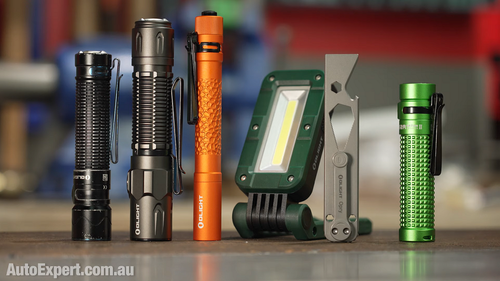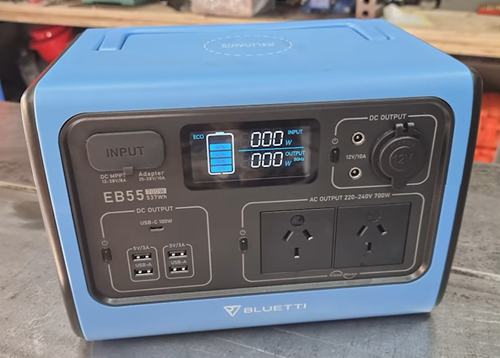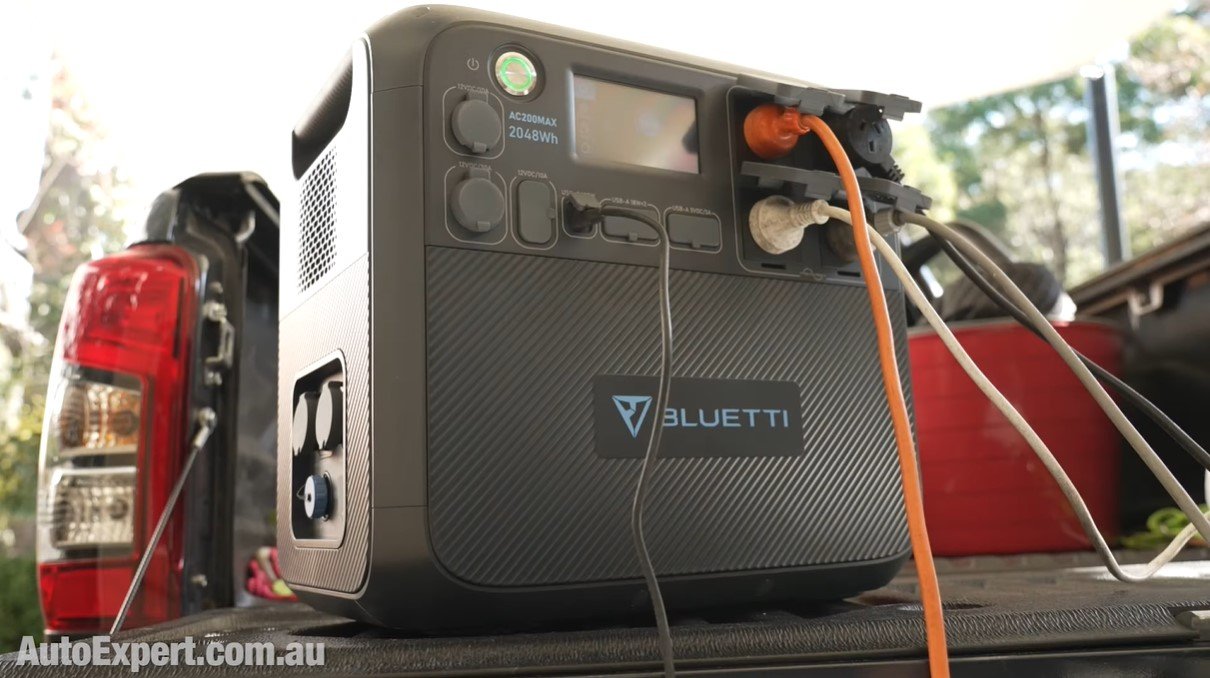Is internal combustion dead? Australian automotive industry finally agrees on more electric vehicles
The only problem with lobby groups and corporate interests agreeing to unite on the transition to an EV fleet is the facts don’t. Internal combustion is only dead if you ignore the truth…
Did you hear about the stench, which erupted in Canberra recently? Five automotive organisations that hate each other passionately got together, and conversed - almost like grown-ups.
They grabbed their crayons and filled their thought bubbles with pipedreams of emissions-reducing electric utopia. They talked and talked and talked … and eventually a press release Hydra roared across the internet into multiple inboxes across Australia.
This report is to help you better understand what’s going on in the allegedly emissions conscious car industry with regards to electric vehicle uptake - in the event the choices lobby groups and corporate giants make might have a knock-on effect for you.
That press release Hydra, went along the lines of:
At least they got the grammar right. (It’s never ducking out for ‘an haircut’.) But ‘historic? Please. This is historic:
Even the death of Holden was historic. But this was just five professional lobby groups in a room, with crayons, metaphorically. Personal opinion.
(No comment is made about the individuals - they’re just there parroting the carefully considered views of their organisations, I’m sure. I’m only commenting on the positions of those organisations. This is also my honest personal opinion. It’s a completely subjective determination.)
Imagine that. Five suits from these organisations, all vital to the national interest, no doubt, and their secretaries, all in a room, with their crayons and their lip balm, nodding, checking their Twitter for vital updates.
But nobody could successfully count higher than 25.
“One, two, skip a few. How many’s that, Tiffany?”
“Not sure, chief. It’s more than 25. I’m not trained for that. None of us is. We typically get the consultants in, if it’s a really big number. I’ll have to take that question under advisement.”
Here are some real principles: CARS and CARBON: The truth about how much our cars really emit - and taking real climate action
My AutoExpert AFFORDABLE ROADSIDE ASSISTANCE PACKAGE
If you’re sick of paying through the neck for roadside assistance I’ve teamed up with 24/7 to offer AutoExpert readers nationwide roadside assistance from just $69 annually, plus there’s NO JOINING FEE
Full details here >>
AutoExpert DISCOUNT OLIGHT TORCHES
These flashlights are awesome. I carry the Olight Warrior Mini 2 every day - it’s tiny, robust, and super useful in the field or in the workshop. Olight is a terrific supporter of AutoExpert.
Use the code AEJC to get a 12% discount >>
Generators suck! Go off-grid with AutoExpert BLUETTI PORTABLE POWER STATIONS
Need mobile, reliable power? If you’re camping, boating, caravanning or building a dirty big shed in the back paddock, and you need to run a refrigerator, lights, air conditioner, cooking, and/or a bunch of tools - Bluetti has a clean, tidy, robust solution…
Get your AutoExpert free shipping discount here: https://bit.ly/3n62heK
Which principle is the principal’s principle?
I wonder what some of these agreed-in-crayon masturbatory principles actually are, don’t you? Let’s check out the ones we can count, starting with, perhaps, number one.
Well done. Let’s ‘embrace’ that, shall we? Should make a big difference, up front. How about we all join the electric utopia. I’d enjoy that, only not with them.
Five CEOs - actually four, and a secretary - who actually passed a resolution to embrace electricity. Welcome to the 18th century.
How ‘Benjamin Franklin’ of them.
That’s resolution number three of the 25-ish crayon EV principles list, which is of course what this is all about. These lobby groups want to tell the government how to play it, because that’s a way to slip in gently anti-consumer policies, all tarted up in the right lipstick, so some halfwit minister thinks it smells like a good idea.
Such as EV subsidies, which is really just a soundbite way of saying: let’s get the rich some help to buy $80,000+ EVs, when we’re still nationally, emphatically bad at fighting fires and pandemics and floods, and disgraceful at taking care of the elderly. (For example.)
It seems to me that this whole masturbatory policy soiree reeks of being a foundational ploy to allow the tail of LobbyLand to wag the dog of the new Federal Government. Gotta sell more cars, right? Especially those really expensive, so-called ‘zero emission’ electric cars.
That’s number five of bigger-than-25 of agreed-in-crayon EV utopia principles.
Once again: No personal comment is made whatsoever. These people are really there just to parrot the positions of their lobby groups, not represent themselves personally - and it’s those positions on which I am commenting critically, and those organisations. Not the people themselves.
So, let’s talk about incorrect use of terms like: Legacy. I’d respectfully retort that ‘hatred’ might be a legacy of war. It often is. Scarring might be a legacy of childhood chicken pox. The novel ‘1984’ is pretty clearly George Orwell’s definitive legacy.
But the Australian internal combustion engine fleet is in no way a legacy artefact of anything. This is an objective fact. It is overwhelmingly the core mode of contemporary vehicular transportation.
It cannot be a legacy artefact in a country currently selling more than one million internal combustion engine vehicles every year. Not in a country on track to sell more than one million of these this year, despite the supply constraints.
Not in a country where five of the top 10 selling vehicles last month were Hilux, Ranger, D-MAX, Triton and LandCruiser. Show me the electric alternative to these five incredibly popular vehicles. Nothing equivalent and electric is available at any price.
If some mouth-breather with a mullet and a flanno goes out and buys his new Ranger Wildtrak next month: it’s gunna be on the road for the next 15 years. That’s not ‘legacy’. Calling it ‘legacy’ is to finalise one’s divorce with reality.
According to, you know, facts, 537,858 vehicles have been sold in the first six months of this year, in Australia. Only 9680 of them were electric. That means 98 per cent of the actual new vehicles getting sold today use internal combustion as their primary means of motive power.
This is simply not what ‘legacy’ looks like.
AUSTRALIA’S VEHICLE FLEET: MURDER BY SHEER NUMBERS
This whole crayon-powered audition for ‘Australia’s biggest environmental bullshitter’ centres around three entirely fraudulent concepts, and you can read them for yourself, in full, in the release:
One: A seemingly imminent transition to EVs.
Two: Combustion as a legacy technology.
Three: The would-be role of these professional barrow-pushers, as ideal government ‘educators’.
Let’s just detain ourselves briefly with some more ontologically objective facts about this transition away from ‘legacy’ combustion to electric green utopia:
There are about 15 million passenger vehicles on Australian roads (it depends how you define them). 23,000 of those vehicles are electric. That’s from the January 2021 Motor Vehicle Census.
So, currently, 1.5 vehicles out of every 1000 registered passenger vehicles on Australian roads is electric. And we seem to be on track to sell about another 20,000 EVs this year.
Image: BYD/Twitter
If I get out Harry Potter’s wand and sell 200,000 EVs a year, for 10 years, that’s two million EVs out of about 15 million, by 2032. That’s 13 per cent of the national fleet. In a decade. About one car in seven.
This would require a ten-fold increase in the number of EVs sold this year, on average, for a decade. No idea where they’re coming from, and it’s unlikely we could even source them from the respective manufacturers (because building our own won’t work, despite Adam Bandt’s nice utopian EV manufacturing idea). And we’d have to convince people to pay $30k more than an equivalent conventional car.
That’s what this so-called ‘transition’ really looks like. It will not be rapid because it cannot be rapid.
If we ‘supersize’ the wand here, and we make it 500,000 EVs a year, starting this year (in other words, roughly one vehicle in every two sold being an EV, for a decade) in 10 years’ time there will be five million EVs on the road - for about one in three across the total fleet.
We would have to go completely ‘Cuckoo’s Nest’ - not that we aren’t there already - but let’s make it ‘every vehicle sold must be an EV’ today. (Let’s overlook the minor impediments that you cannot buy an EV ute, or heavy duty EV van, or a LandCruiser equivalent, nor an EV for heavy towing nor proper off-roading.)
If we just magically sell all EVs - about one million annually - in a decade, only two-thirds of all passenger vehicles on the road will be EVs.
THE OTHER GREAT RESIGNATION: NOT ACCEPTING FACTS
This so-called transition is going to take multiple decades (even longer with the amount of greenwashing the car industry is doing). At least, it will take decades if you have even vestigial respect for the facts.
The quickest this can happen is 15 years. That’s 2037. And we’d have to stop selling conventional cars right now. Today.
There’s also an incredible infrastructure challenge in parallel. We can certainly generate the electricity to charge a 100 per cent EV fleet. But it will be a major infrastructure challenge to do that with renewables. If we do it with coal - well, perhaps we should change the name from ‘EV’ to ‘RCV’ for ‘remote combustion vehicle’ - because that’s all an EV is, if you power it with coal...
It’s an even bigger challenge to upgrade the local electricity supply infrastructure. If every home in your street installs a simple, single-phase 32-amp EV charger, for about 7kW of charging - kind of thing that gets you a full charge overnight in most EVs - and we all get home from work in the evening and plug in at more or less the same time - the local substation is simply not going to cope. The local infrastructure was never designed for this kind of demand.
If you live in an apartment, the body corporate is going to have to approve a healthy six-figure spend just to upgrade the main distribution board, and get individually metered chargers wired in to every parking spot. And the wires in the street are going to have to get a lot bigger.
And then, there are all the cars parked every night, in the street. How the actual hell are we going to charge them? We’re talking thousands of vehicles across every suburb. Fantasise and pretend all you want in Canberra with your crayons and your celebratory cakes and press releases, but there is currently no infrastructure plan for this.
It’s a far bigger project than the NBN … and we handled that so well.
Honestly, these organisations - run mainly by people I would categorise as professional executives; certainly a shortage of actual STEM-type qualifications in the room - I honestly believe they lack the capacity to appreciate the scope of their bullshit principles. Let’s just ‘embrace’ EVs.
So who exactly are these EV-advocating organisations?
First up is the MTAA. According to Grey’s Anatomy, the MTAA is the human appendix of lobby groups. It’s essentially an organ with, seemingly, no appreciable purpose. It can’t even describe what it does in plain English. Let alone ‘grammar’. P.S. Turn off the caps lock key.
Next is one of my personal favourites, the Spice Girls, AKA the Canberra bureau of Toyota’s PR agency, the Federal Chamber of Automotive Industries. Amazingly, the other carmakers (that aren’t Toyota) each pay a healthy six-figure sum for the FCAI to thrust Toyota’s barrow deep into the Bullshit Factory.
Not a happy arrangement. The non-Toyota members of the Federal Chamber have these regular top secret meetings about breaking away and forming a separatist alliance, but they each lack the testicular fortitude to rip the Band-Aid off and actually break away. So the FCAI is there, notionally on behalf of the whole car industry, but, you know, oh what a feeling.
Then there’s the AAAA. The Australian Automotive Aftermarket Association is the lobby group for independent mechanics and businesses of that nature.
The FCAI hates the AAAA, and the feeling is mutual. So getting these two respective heads in the same room together without metaphorical bloodshed was perhaps the biggest achievement of the whole damn crayon day.
The car industry fought aggressively for years to stop aftermarket and independent mechanics having access to basic service and repair information so the latter could work on the car industry’s poorly-made shitboxes, which people couldn’t afford to replace anew yet. FCAI reckoned it would affect selling their daft genuine-parts-only bullshit to the unsuspecting public, meanwhile Joe’s Mediocre Mechanical just wanted to keep his little workshop afloat to feed his kids.
We can’t forget the Australian Automotive Dealer Association, as much as everybody loves their local car dealer for their unspeakable customer care in the service department. Or the altruistic showroom floor salesman or saleswoman who wants nothing more than you see your average single mother drive away in a vehicle $10,000 over budget simply because she needed the panoramic sunroof and crystal champagne flutes to match her three child seats and double pram covered in christ-knows-what.
The AADA is also, of course, in for the fight of the century - the heavyweight title: a $650 million stoush between Mercedes-Benz and 40 of its dealers. 40 rat-sized snakes versus one giant Anaconda-sized rat, duking it out over alleged grievous harm to the goodwill of the rat-sized snakes (dealers) when the snake-sized rat (Benz) allegedly threw them under the bus. AADA is representing car dealers on the road to green utopia. Cheering on the FCAI.
Nothing anti-consumer about that.
And finally, rounding out this evil empire of crayon-powered planet-saving EV Utopians: the finance mob, the National Automotive Leasing and Salary Packaging Association - NALSPA.
NALSPA is the group you wouldn’t want to fight here. We’re talking beancounters with MBAs (or similar) in charge of the wild, wild west of novated leasing. Let us all lease our way to a greener future, shall we?
Novated leasing is, of course, where your employer lets a bank robber into the vault by locking itself into a novated leasing specialist, at which point they get the knives out and fillet you, systematically, typically in an environment devoid of regulation and bereft of all transparency.
I never thought I would say this - but unless employers are especially vigilant, salary packaging can be more anti-consumer than anything the FCAI could ever dream up. So, well done there, pushing the boundaries.
There you have it. The ‘who’s who’ of crayon EV policy.
Now, in closing, ask yourself this: if you were Anthony Albanese, bit of a plodder, but in charge, and a significant upgrade; or Tanya Plibersek (his henchperson for the Environment and Water), ask yourself this:
If you needed guidance on green vehicle policy from the best organisations in the business, because you absolutely wanted to solve the climate problem, and you needed unimpeachable advice from high-level technical specialists, motivated solely by the patriotic desire to Make Australia Less Shit, is this the room full of successful candidates?
Because if it is, don’t go retiring to Fiji or the Solomon Islands.




























Toyota has raised the Corolla and called it a small SUV, one that offers reliability, practicality and even performance atop the range. Let’s see if there are any redeeming features that can justify the $50K price?